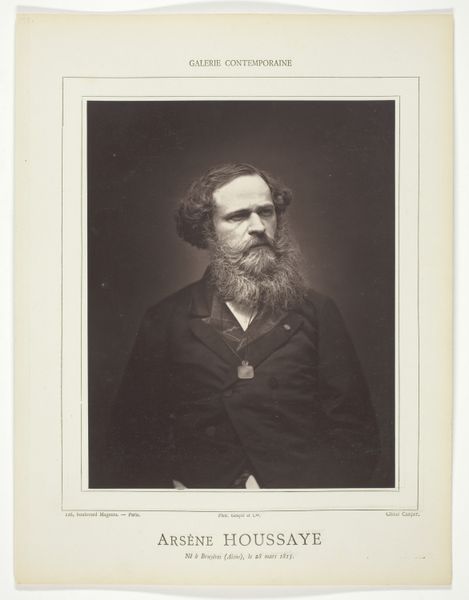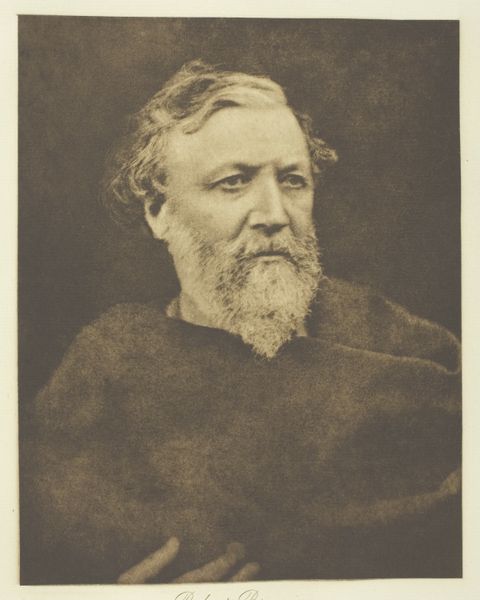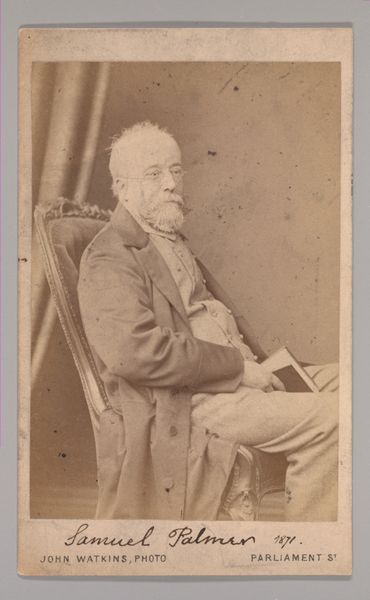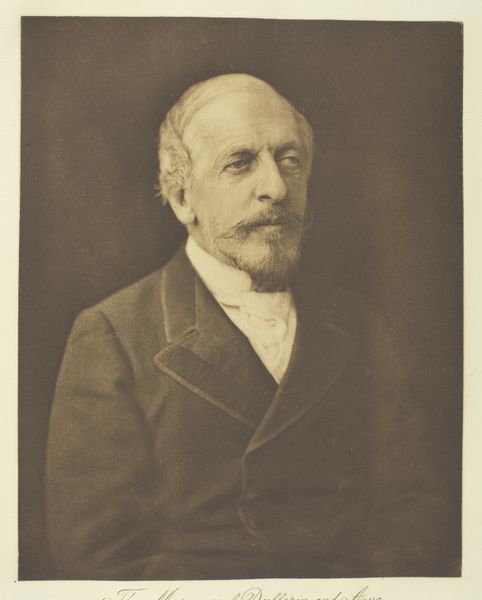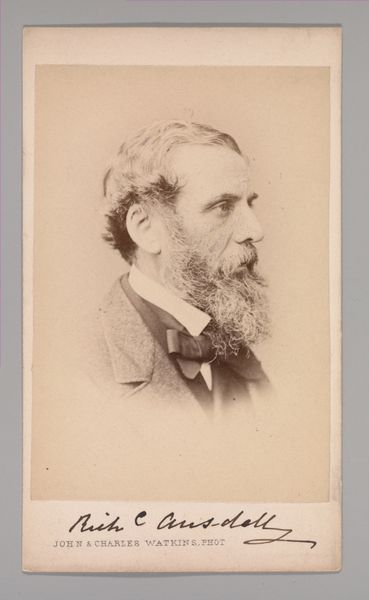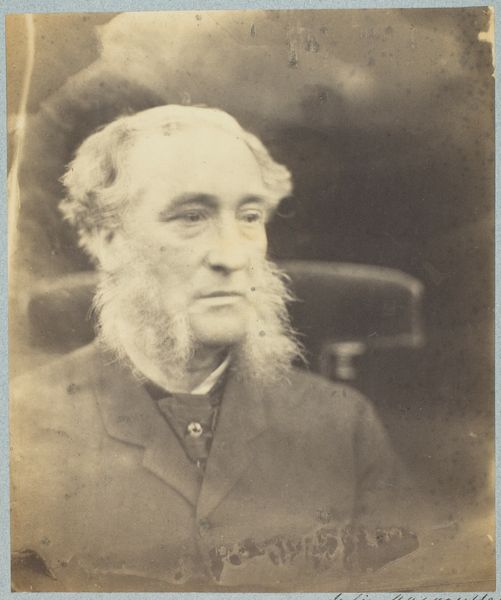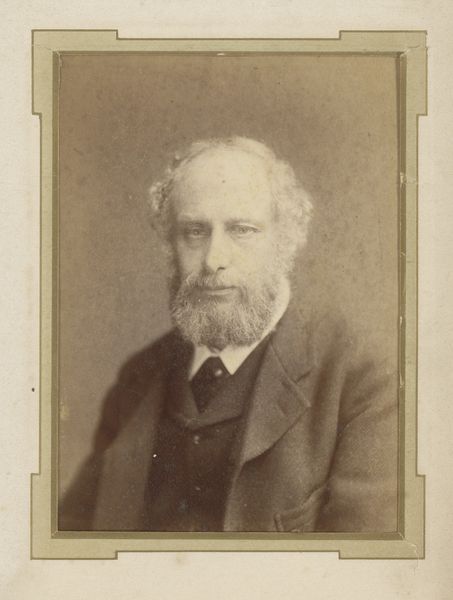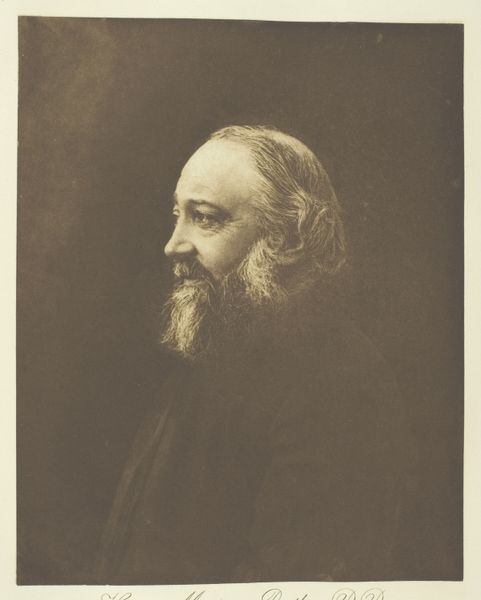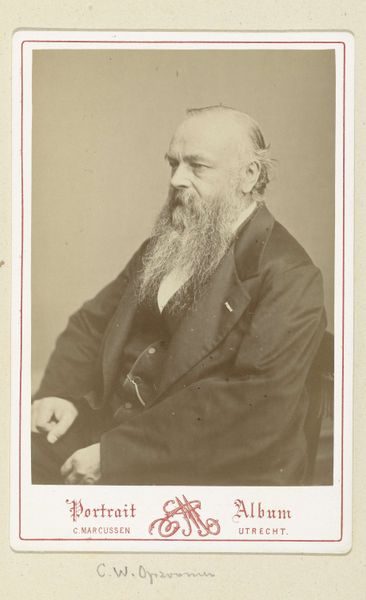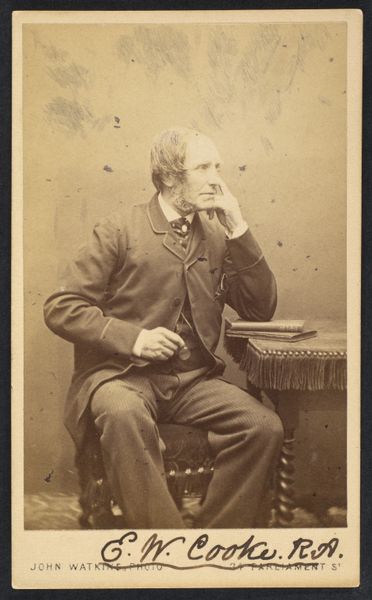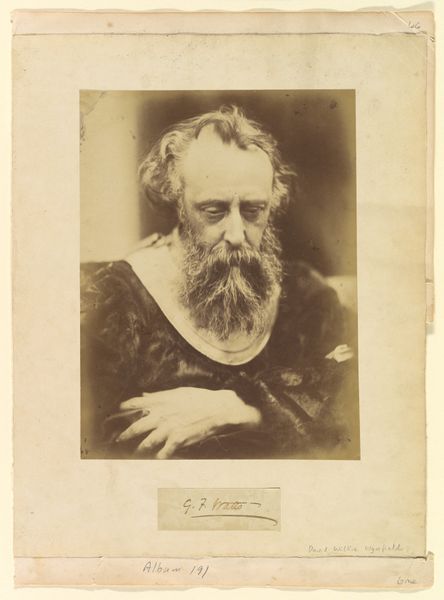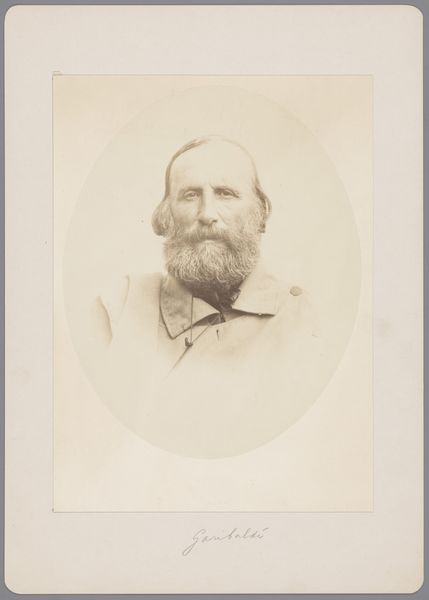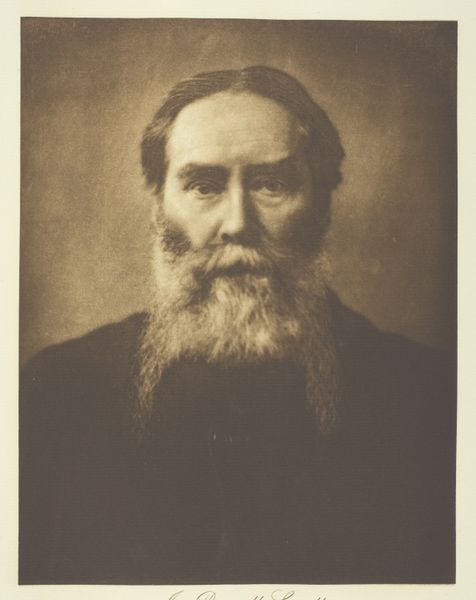
Dimensions: 25.5 x 20.2 cm. (10 1/16 x 7 15/16 in.)
Copyright: Public Domain
Curator: This is Julia Margaret Cameron's photograph, "George Frederick Watts," a gelatin silver print from 1864, residing here at the Metropolitan Museum of Art. Editor: Heavens, he looks like a storm cloud brooding in a comfy chair! All that swirling beard and hair…you can almost hear the thunder rumbling around him. It has to be the most romantic rendering ever. Curator: Indeed. Cameron’s deliberate use of soft focus is evident; this haziness enhances the Romantic mood, shifting emphasis away from sharp, factual representation to a more expressive, emotive portrayal. Editor: She's got him gazing off somewhere distant. I wonder what epic poem or philosophical conundrum is swirling in his head at that very moment? Maybe deciding what shade of sepia will change painting history... Or more practically about what to eat after? Curator: Cameron, with her close connections to the Pre-Raphaelite circle, was interested in depicting the inner character of her subjects. Here, she employs dramatic lighting and careful composition to convey Watts' artistic temperament. The lighting, notice how it caresses the cheek and brow. It subtly hints at the depth and complexity that she seems after. Editor: And all the brown…sepia. It envelops him, wrapping the whole image up into a nostalgic haze that makes me wanna pick up a pen, to write dramatic letters, sealed with wax of course. Or maybe I should just grab a blanket for the coming night! Curator: Observe how she employs chiaroscuro effects, and that's the strategic use of light and shadow, isn't merely decorative. It guides the viewer's eye and heightens the subject’s psychological presence. There is this undeniable quality in portraiture, almost a melancholic mood here... Editor: I have to say, staring into Watt's faraway eyes and unruly beard... Makes you think how artists make emotions real; turning invisible thoughts into something you can actually see. And this romantic portrayal really brings you in. It looks like they're both pondering life mysteries, even if, technically speaking, just one has been captured on camera. Curator: This photographic choice encapsulates the nuances of 19th-century artistic sensibilities regarding portraiture—not simply to record, but rather to interpret. It's the interplay of light and emotion, that solidifies Cameron’s distinctive style as evocative and artful rather than documentary. Editor: True! And just looking into his brooding artist eyes reminds me that artists are never not conjuring up drama whether they mean to or not! Curator: A fitting final thought about art’s ability to project not just the sitter's but the artist's subjective interiority onto us, too.
Comments
No comments
Be the first to comment and join the conversation on the ultimate creative platform.
